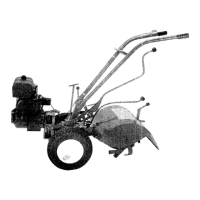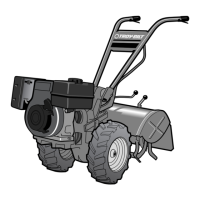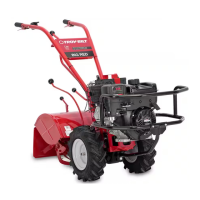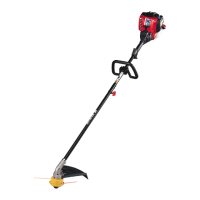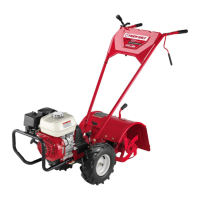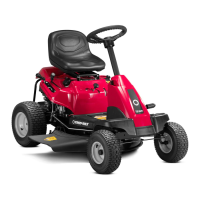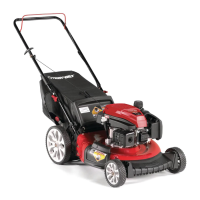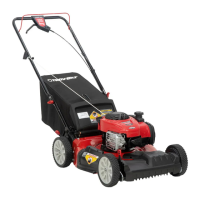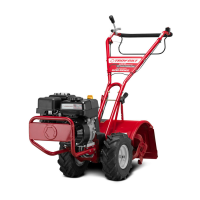Since
your
throttle
wire
connects
directly
onto
the
governor
control
disc, you should be
alert to the fact that
the
nut
and
bolt
clamping
the
governor
arm (in Photo 7/47)
should
not be
loosened
or
fiddled with. It takes a trained
serviceman
to
readjust a
governor
if you loosen
that
bolt
or
the wide
nut
in
front
of
the
governor
control disc. So please
don't
fool with them
unless you get some knowledgeable help first.
Just
make sure the
throttle
cable is lubricated
on
that
end. A
rusty
throttle
cable is the most
common
reason
for
having
to
put
too
much
pressure on the
throttle
lever
to
move
it-which
ultimately
leads to a bent wire and
the
start
of
tinkering
with the
governor
linkage.
PERIODIC LUBRICATION
Frequent lubrication
of
the throttle cable
works wonders.
Rememberto
oil
the
throttle
ca-
ble regularly with engine oil, grease, silicone
oil spray,
or
graphite. All
work
well. Brush
or
spray the
lubricant
on the entire length
of
the
cable casing. Lubricate the external moving
linkages
of
the
throttle
lever, speed
control
and
governorassembly.
Lubricate them at least every few times you
go
out with
your
tiller-at
least
once
every few
weeks. Lubrication
of
the
throttle
cable
com-
ponents
prior
to
winter
storage can also be
quite
helpful in the performance
of
your
tiller
in the
spring.
QUICK ENGINE MAINTENANCE REMINDERS
1. Engine Oil
- Use
SE
rated oiI
right
from
the start.
-Check
the oil level and make sure it is clean.
-Check
the oil level
with
the
dipstick
prior
to
each use
of
thetiller.
-Check
the oil level every 2 hours, if
you
are
tilling all day
long.
-Check
the oil in the engine every 10
hours
or
less.
-In
dusty conditions, change the oil whenever
it
becomes dirty.
2.
Check and service the air cleaner frequently.
Every time you till
for
more than 1 hour, check
the air cleaner at intervals
during
tilling.
3.
Clean the debris
from
the
cooling
fins on
the
engine.
4.
Check the governor and
carburetor
linkages
for
operation and ease
of
movement. Oil them
occasionally.
5.
Inspect the spark plugs.
6.
Check the carburetor and air cleaner
fit
for
tightness and
good
gaskets. Make sure that
there are no movements, indicating looseness.
7.
Check gasoline
for
presence
of
water.
8.
Inspect the engine shroud
for
dents
or
inter-
ference with the flywheel.
9.
Engine power loss (not due to faulty
carbure-
tor
adjustment
or
bad fuel):
-Check
the engine compression
immediately
after the engine stops running. Pull
gently
on
the starter rope to feel
the
compression.
-Where
there
is
a loss
of
compression, check
for
a sticky valve
or
valve lifter,
or
for
loose
head bolts
or
a blown gasket. See
an
authoriz-
ed service dealer.
-Have
the compression tested
for
suspected
worn rings.
-Worn
rings can
be
caused by
dirty
oil
or
a
dirty
aircleaner.
-Don't
use non-detergent oil
for
long periods,
then switch
to
detergent oil. Use
SE
rated oil
right
from the beginning. Prolonged use
of
non-
detergent oil
prior
to use
of
detergent oil can
cause excessive ring wear.
111
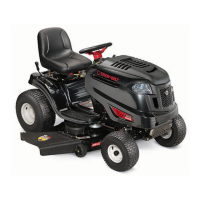
